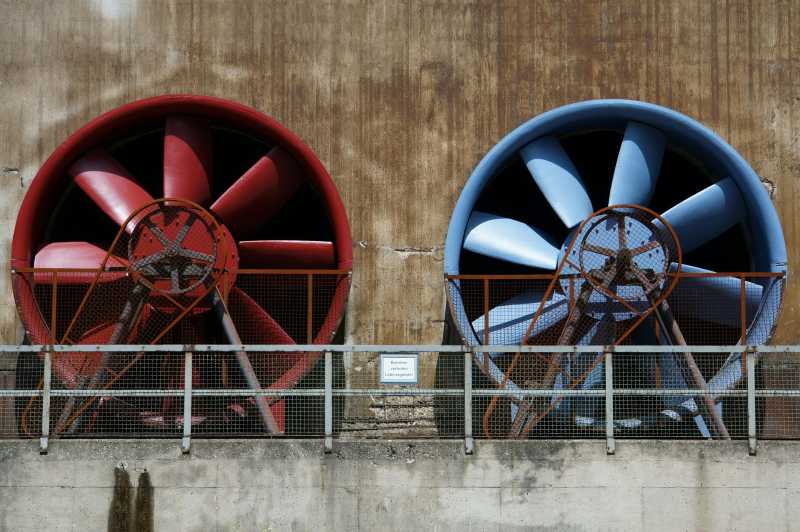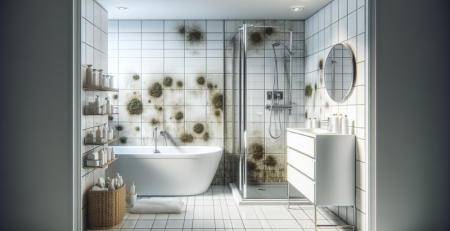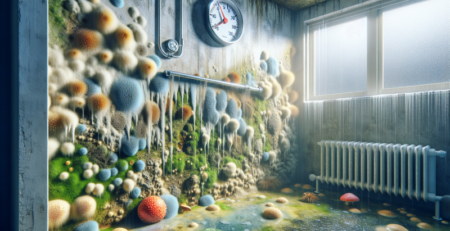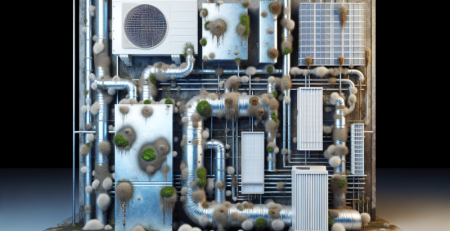The Role of Ventilation in Mold Prevention
Proper ventilation plays a crucial role in mold prevention, especially in areas prone to moisture and humidity. Mold thrives in damp environments, making it essential to ensure that your home or business is adequately ventilated. By allowing fresh air to circulate and reducing humidity levels, you can significantly decrease the likelihood of mold growth. At Kraus Restoration, NJ’s leaders in water, mold, and fire damage restoration, we understand the importance of maintaining a healthy indoor environment. Our IICRC certified experts are available 24/7 to provide rapid response services, ensuring that any potential mold issues are addressed promptly. Serving Central and Northern NJ, we are committed to helping you protect your property from the damaging effects of mold. For immediate assistance, call us at (973) 886-2021.
Understanding Mold Growth: The Importance of Humidity Control

Mold growth is a common issue in many homes and buildings, often exacerbated by high humidity levels. Understanding the relationship between humidity and mold is crucial for effective prevention. Mold thrives in environments where the humidity level exceeds 60%. According to the Environmental Protection Agency (EPA), controlling indoor humidity is one of the most effective ways to prevent mold growth.
To mitigate mold risks, consider the following strategies:
- Maintain indoor humidity levels between 30% and 50%.
- Use dehumidifiers in damp areas such as basements and bathrooms.
- Ensure proper ventilation in kitchens and laundry rooms to reduce moisture buildup.
Regularly monitoring humidity levels can help identify potential problems before they escalate. "Mold can begin to grow within 24 to 48 hours of water exposure," warns the CDC, emphasizing the need for prompt action in moisture control.
For more information on how to effectively manage humidity and prevent mold, visit the mold cleanup section of our website. Additionally, understanding the importance of ventilation can further enhance your mold prevention efforts. Explore our services for comprehensive solutions to maintain a healthy indoor environment. For any inquiries, feel free to contact us.
How Proper Ventilation Reduces Moisture Levels

Proper ventilation is essential in maintaining a healthy indoor environment and plays a crucial role in mold prevention. When air circulation is inadequate, moisture can accumulate in various areas of a building, creating an ideal breeding ground for mold spores. By ensuring that air flows freely throughout spaces, excess humidity can be effectively reduced, minimizing the risk of mold growth.
Ventilation systems, whether natural or mechanical, help to expel stale, moist air and replace it with drier, fresh air from outside. This exchange is vital in areas prone to high humidity, such as bathrooms, kitchens, and basements. Installing exhaust fans and ensuring that vents are unobstructed can significantly enhance air circulation. Additionally, using dehumidifiers in conjunction with proper ventilation can further control moisture levels, especially in regions with high humidity.
Regular maintenance of ventilation systems is also important. Dust and debris can clog vents, reducing airflow and allowing moisture to build up. By keeping these systems clean and functional, homeowners can protect their properties from mold-related issues. For more information on how to prevent mold and maintain a healthy environment, visit our about page or check out our mold cleanup services. If you have any questions, feel free to contact us.
Types of Ventilation Systems for Mold Prevention

Effective ventilation is crucial in preventing mold growth in both residential and commercial spaces. There are several types of ventilation systems that can significantly reduce humidity levels and improve air quality, thereby minimizing the risk of mold development.
One common type is natural ventilation, which relies on the flow of outdoor air through windows, doors, and vents. This method is cost-effective and energy-efficient but may not be sufficient in areas with high humidity or limited airflow. Mechanical ventilation systems, such as exhaust fans and whole-house ventilation systems, actively circulate air and can be tailored to specific needs. These systems help remove stale air and introduce fresh air, which is essential in damp areas like bathrooms and kitchens.
Another effective option is heat recovery ventilation (HRV), which not only provides fresh air but also recycles heat from the outgoing air to warm the incoming air, making it energy-efficient. Dehumidifiers can also be integrated into ventilation systems to control moisture levels effectively.
For more information on how to protect your home from mold, visit our mold cleanup services or learn about our water cleanup solutions. If you have any questions, feel free to contact us for expert advice.
The Impact of Natural Ventilation on Indoor Air Quality
Natural ventilation plays a crucial role in enhancing indoor air quality, particularly in the context of mold prevention. By allowing fresh outdoor air to circulate within a building, natural ventilation helps to dilute indoor pollutants and reduce humidity levels, both of which are essential for maintaining a healthy environment. High humidity can create an ideal breeding ground for mold spores, leading to potential health risks and structural damage.
Implementing effective natural ventilation strategies, such as opening windows and utilizing vents, can significantly lower the moisture content in the air. This process not only improves air quality but also minimizes the likelihood of mold growth. In addition, natural ventilation can help to regulate temperature, making indoor spaces more comfortable and reducing reliance on mechanical cooling systems, which can sometimes contribute to indoor air quality issues.
For those concerned about mold issues, understanding the importance of ventilation is vital. Regular assessments of indoor air quality and moisture levels can help identify potential problems before they escalate. If mold is already present, professional mold cleanup services can effectively address the issue, ensuring a safe and healthy living environment. To learn more about how to improve your indoor air quality and prevent mold growth, consider exploring our services or about us page for more information.
Common Ventilation Mistakes That Lead to Mold Issues
Effective ventilation is crucial in preventing mold growth in homes and buildings. However, several common mistakes can undermine this effort, leading to moisture accumulation and subsequent mold issues. One prevalent error is inadequate airflow, often caused by blocked vents or improperly sized ductwork. This restriction can trap humid air, creating an ideal environment for mold spores to thrive. Regular maintenance of HVAC systems is essential to ensure that air circulates freely throughout the space.
Another mistake is neglecting to ventilate high-moisture areas, such as bathrooms and kitchens. Failing to install exhaust fans or using them inconsistently can lead to increased humidity levels, promoting mold growth. Additionally, relying solely on natural ventilation without considering external weather conditions can be problematic. For instance, opening windows during high humidity days can introduce more moisture into the home.
Lastly, ignoring the importance of insulation can lead to condensation on walls and ceilings, which can also foster mold development. Proper insulation helps maintain consistent temperatures, reducing the likelihood of moisture buildup. By addressing these common ventilation mistakes, homeowners can significantly reduce the risk of mold issues. For more information on how to protect your home from mold, visit our mold cleanup page or contact us for expert advice.
Maintenance Tips for Effective Ventilation
Proper ventilation is crucial in preventing mold growth in homes and buildings. Effective ventilation helps regulate humidity levels, ensuring that moisture does not accumulate in areas prone to mold, such as basements, bathrooms, and kitchens. To maintain optimal airflow, regularly inspect and clean ventilation systems, including ducts and filters, to remove dust and debris that can obstruct airflow.
Additionally, ensure that exhaust fans in moisture-heavy areas are functioning correctly and venting outside. This practice not only reduces humidity but also helps eliminate odors and airborne contaminants. It’s also important to check for any leaks or water intrusion that could lead to damp conditions, as these are prime environments for mold proliferation.
Consider using dehumidifiers in particularly humid climates or during wet seasons to further control moisture levels. Regularly monitoring indoor humidity with a hygrometer can help you maintain ideal conditions, ideally between 30% and 50%.
If you suspect mold growth despite your best efforts, it’s essential to seek professional assistance. Experts can provide comprehensive mold cleanup services to address any issues effectively. For more information on maintaining a healthy indoor environment, visit our about page or explore our services.
The Role of Ventilation in Different Environments: Homes vs. Commercial Spaces
Ventilation plays a crucial role in preventing mold growth in various environments, particularly in homes and commercial spaces. In residential settings, proper ventilation helps maintain indoor air quality by allowing fresh air to circulate and reducing humidity levels. High humidity can create an ideal breeding ground for mold, making it essential for homeowners to ensure that areas like bathrooms, kitchens, and basements are adequately ventilated. Installing exhaust fans and opening windows can significantly reduce moisture accumulation, thereby minimizing the risk of mold infestations.
In commercial spaces, the stakes are even higher. Businesses must adhere to strict health and safety regulations, making effective ventilation systems vital. These systems not only control humidity but also filter out pollutants and allergens, creating a healthier environment for employees and customers alike. Regular maintenance of HVAC systems is essential to ensure they function optimally and prevent mold growth.
Both homes and commercial spaces benefit from professional mold cleanup services when mold is detected. Understanding the specific ventilation needs of each environment can help mitigate mold risks effectively. For more information on how to protect your space from mold, visit our about page or explore our services.
In conclusion, proper ventilation is a crucial element in the fight against mold growth in our homes and workplaces. By ensuring adequate airflow and reducing humidity levels, we can create an environment that is less conducive to mold development. Regularly maintaining ventilation systems, utilizing exhaust fans in high-moisture areas, and allowing fresh air to circulate can significantly mitigate the risk of mold infestations. Additionally, being proactive about monitoring humidity levels and addressing any sources of moisture promptly can further enhance our mold prevention efforts. Ultimately, understanding and implementing effective ventilation strategies not only protects our health and property but also contributes to a more comfortable and safe living environment. By prioritizing ventilation, we take a significant step towards mold-free spaces, fostering well-being for ourselves and our loved ones.









